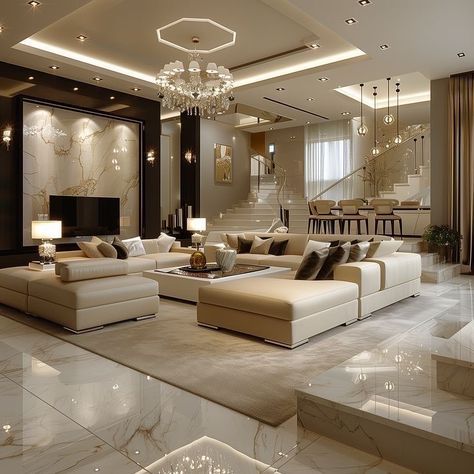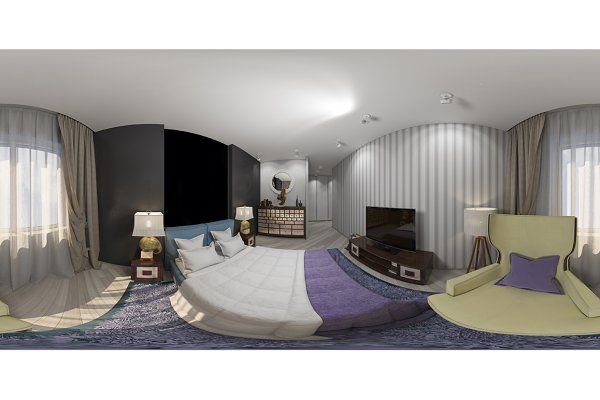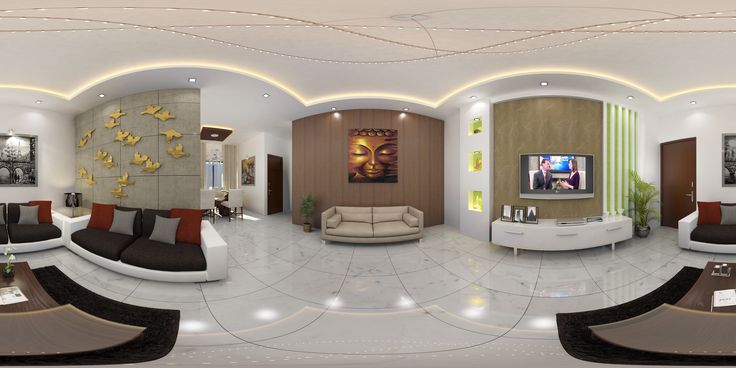Introduction to the Interior Design Industry
Step into the vibrant world of interior design, where creativity meets functionality. This industry is a beautiful blend of art and science, transforming spaces into reflections of personal style and comfort. Every day offers new challenges and opportunities for innovation as designers craft environments that inspire joy, foster productivity, or create serene retreats.
Have you ever wondered what it’s like to be an interior designer? From brainstorming concepts and meeting clients to collaborating with architects and contractors, there’s more than meets the eye in this dynamic profession. Join us as we delve into a typical day in the life of an interior designer, uncovering both the rewards and challenges that come with shaping our surroundings. Whether you’re considering a career in design or just curious about this creative field, you’ll gain insight into how these professionals turn dreams into reality.
Table of Contents
Education and Training Required for Interior Designers
Becoming an interior designer typically requires a blend of formal education and practical experience. Most professionals start with a degree in interior design, architecture, or a related field. These programs provide foundational knowledge in design principles, color theory, and spatial planning.
Many aspiring designers also benefit from internships or entry-level positions that offer hands-on experience. This exposure allows them to work directly with clients and understand the dynamics of real projects.
Licensure is another important aspect of this career path. In some regions, passing the National Council for Interior Design Qualification (NCIDQ) exam is essential for professional practice.
Continued education through workshops and certifications can help designers stay current with trends and technologies in the industry. Networking opportunities at conferences often yield valuable insights into best practices as well.
A Typical Day in the Life of an Interior Designer
The day starts early for an interior designer. Mornings often begin with a quick coffee fix while checking emails. New messages can bring updates from clients or suppliers.
After that, it’s time to head into the field. Site visits are crucial, whether it’s assessing progress on a project or gathering inspiration from different spaces.
Midday may involve meetings with clients. These sessions spark creativity and require effective communication skills to understand their vision fully.
Afternoons usually focus on sketching out design concepts. Designers might spend hours selecting colors, materials, and furnishings that align with the client’s desires.
Collaboration keeps the momentum going as they connect with architects and contractors. Ensuring everyone is on board requires finesse and teamwork.
As evening approaches, designers often find themselves refining presentations for upcoming client reviews, blending artistry with practicality in every detail of their work.

Meeting with Clients
Meeting with clients is a pivotal part of an interior designer’s day. It’s where ideas ignite and visions come to life. Each meeting feels like unwrapping a gift full of opportunities.
Designers often start by listening intently to what clients want. Understanding their lifestyle, preferences, and budget sets the stage for collaboration. Questions flow freely as they dive into colors, styles, and functionality.
Visual aids play a crucial role here. Designers may bring mood boards or digital renderings to help articulate concepts more clearly. This visual dialogue helps bridge gaps between imagination and reality.
Trust is essential during these interactions. Building rapport allows designers to suggest creative solutions that resonate deeply with their clients’ desires.
The energy in the room can shift dramatically based on feedback received—whether it’s enthusiasm or skepticism—and that’s all part of the journey toward creating a beautiful space together.
Creating Design Concepts and Presentations

Creating design concepts is where the magic truly happens. An interior designer transforms a client’s vision into tangible ideas that can be assessed and refined.
Sketching initial thoughts on paper or using digital tools allows for exploration of various styles, colors, and layouts. This phase encourages creativity while remaining grounded in practicality.
Once the concept takes shape, it’s time to prepare presentations. These visual showcases not only highlight designs but also tell a story about how each element works together.
A compelling presentation includes mood boards, material samples, and 3D renderings. It provides clients with an immersive glimpse into their future space.
Feedback during this stage is invaluable. Designers often tweak elements based on client reactions, ensuring satisfaction before moving forward with implementation. Balancing aesthetics with functionality keeps every project aligned with both vision and reality.
Collaborating with Other Professionals

Collaboration is key in the world of interior design. Designers regularly engage with architects, builders, and contractors to ensure their vision comes to life seamlessly.
Each professional brings unique expertise. Architects focus on structural integrity, while designers emphasize aesthetics and functionality. This teamwork fosters creativity and innovation.
Regular meetings are essential for maintaining alignment. Here, ideas flow freely as everyone shares insights about materials, timelines, and budgets.
The synergy created through collaboration often leads to unexpected solutions that enhance the overall project quality. It’s not just about design; it’s about creating a space that feels cohesive from every angle.
Networking also plays a crucial role. Building strong relationships within the industry can lead to referrals and new partnerships down the line. These connections enrich a designer’s toolkit, making future projects even more exciting.
In this fast-paced environment, effective communication remains paramount for successful collaborations across multiple disciplines.
Challenges and Rewards of Being an Interior Designer
Being an interior designer is both exhilarating and demanding. The creative freedom can be incredibly rewarding, allowing designers to transform spaces into beautiful, functional environments.
However, challenges abound. Tight deadlines often lead to high-pressure situations. Balancing client expectations with practical constraints requires strong negotiation skills.
Budget limitations add another layer of complexity. Designers must navigate financial restrictions while striving for innovative solutions that satisfy their clients’ visions.
On the flip side, witnessing a client’s joy upon unveiling a completed project brings immense satisfaction. Each successful transformation reinforces the designer’s passion for their craft.
Networking plays a vital role in overcoming hurdles. Building relationships with contractors and suppliers helps streamline processes and enhance project outcomes.
Despite the obstacles faced daily, many find that the rewards far outweigh the challenges in this dynamic field.
Tips for Aspiring Interior Designers
Building a strong foundation is crucial for aspiring interior designers. Start by honing your skills in drawing, color theory, and spatial awareness. Familiarize yourself with design software like AutoCAD or SketchUp—these tools are essential for modern practices.
Networking plays a pivotal role in this industry. Attend workshops, seminars, and trade shows to connect with professionals who can offer guidance and potential opportunities.
Seek internships or apprenticeships to gain hands-on experience. Real-world exposure helps you understand client needs better while refining your style.
Stay updated on trends through blogs, magazines, and social media platforms. Design is ever-evolving; being informed will set you apart.
Cultivate a personal portfolio that showcases your unique vision. It’s not just about what you’ve done but how you present it matters significantly too!
Conclusion
The journey of an interior designer is vibrant and multifaceted. Each day offers new challenges and opportunities for creativity. The blend of aesthetics with functionality keeps the work engaging.
Designers play a crucial role in shaping environments that enhance lives. They navigate client visions, budgets, and timelines to bring dreams to fruition. This dynamic field invites continuous learning and adaptation.
For those considering this path, passion is key. Embracing both the art and business sides will pave the way for success.
Whether it’s residential projects or commercial spaces, every design tells a story. Interior designers have the power to transform ordinary into extraordinary through thoughtful planning and innovative solutions.
Every detail matters in creating impactful spaces that resonate with people on various levels. Engaging deeply with clients fosters relationships that often last well beyond individual projects.
FAQs
The world of interior design is both vibrant and challenging. For those curious about a day in the life of an interior designer, several questions often arise.
What education do I need to become an interior designer? Typically, a bachelor’s degree in interior design or architecture is required. Many designers also pursue additional certifications for specialized skills.
How much can I earn as an interior designer? Salaries vary widely depending on experience, location, and type of work. Entry-level designers might start around $40,000 a year, while seasoned professionals can earn six figures.
What skills are important for success in this field? Strong communication skills are essential for client interactions. Creativity and attention to detail play significant roles as well. Designers must also be adept at project management.
Is it necessary to have my own business as an interior designer? Not necessarily. Many work within firms or collaborate with other professionals on projects before deciding to venture out independently.
Can technology help me in my career as an interior designer? Absolutely! Software programs assist with creating floor plans and 3D renderings that can enhance your presentations significantly.
By addressing these common queries, aspiring designers can gain insight into what it takes to thrive in the dynamic landscape of interior design.




